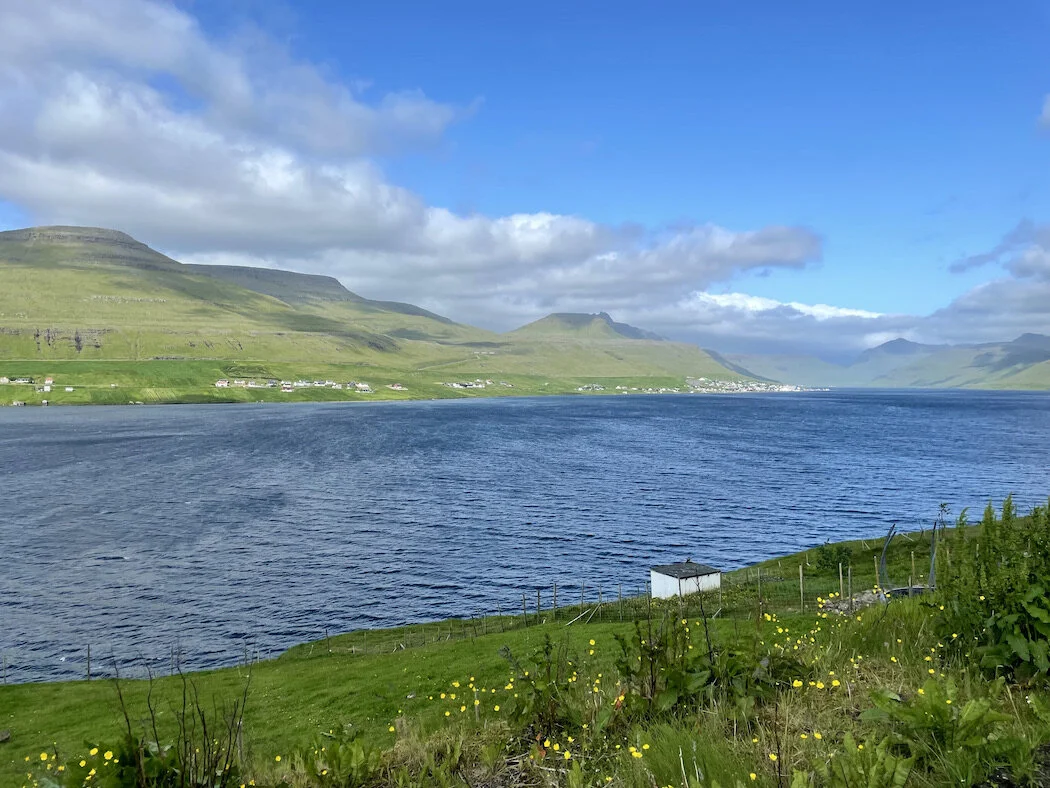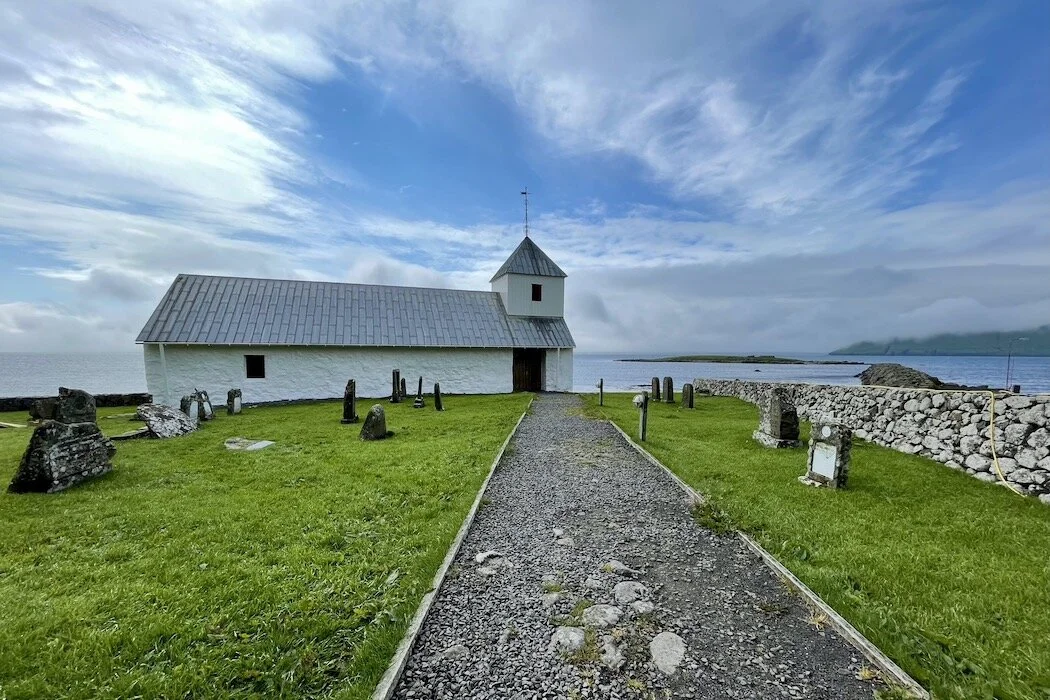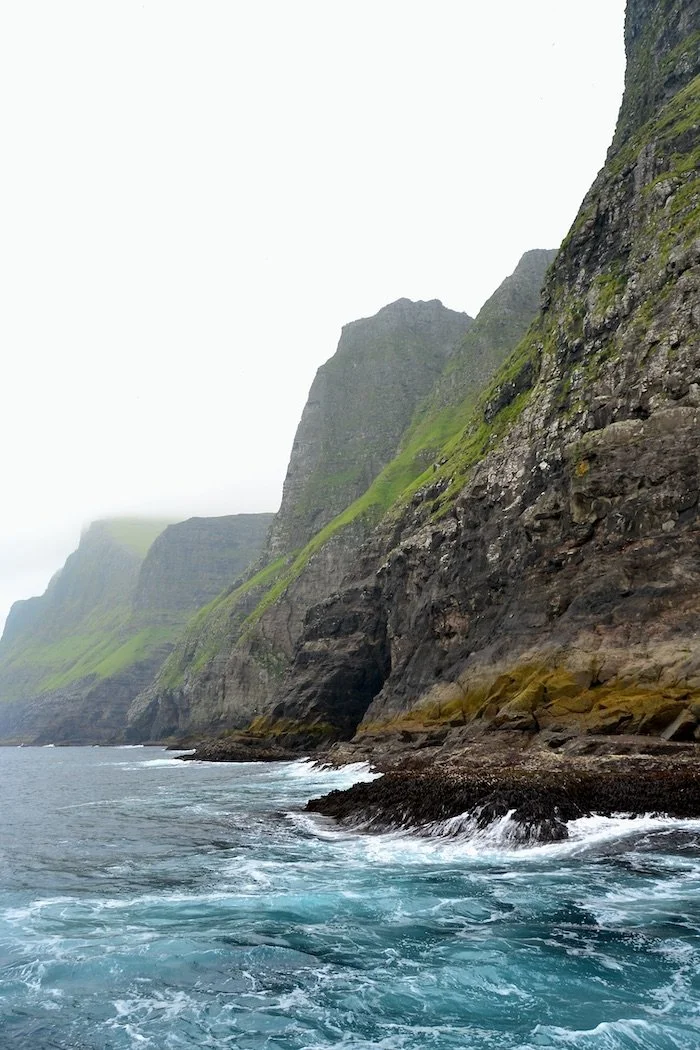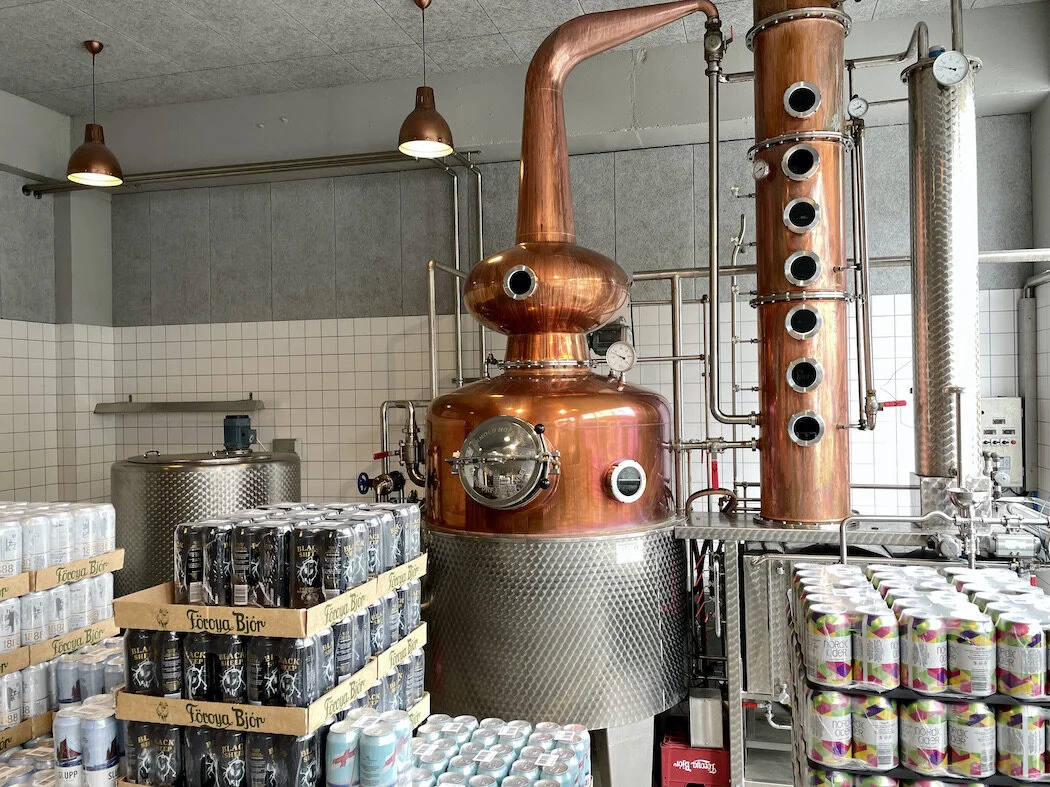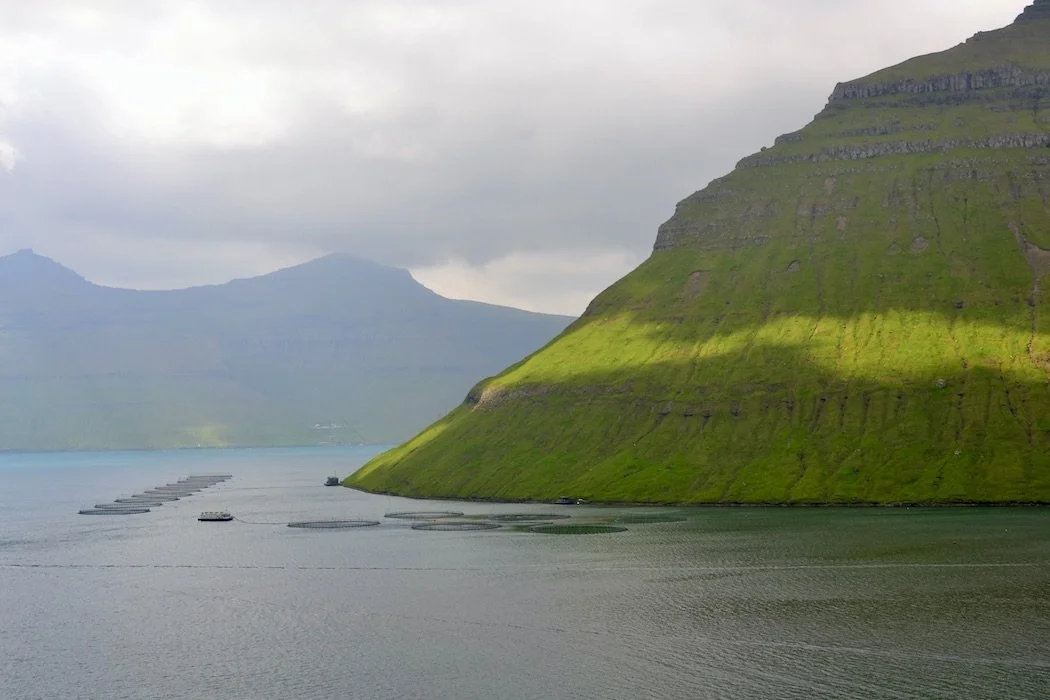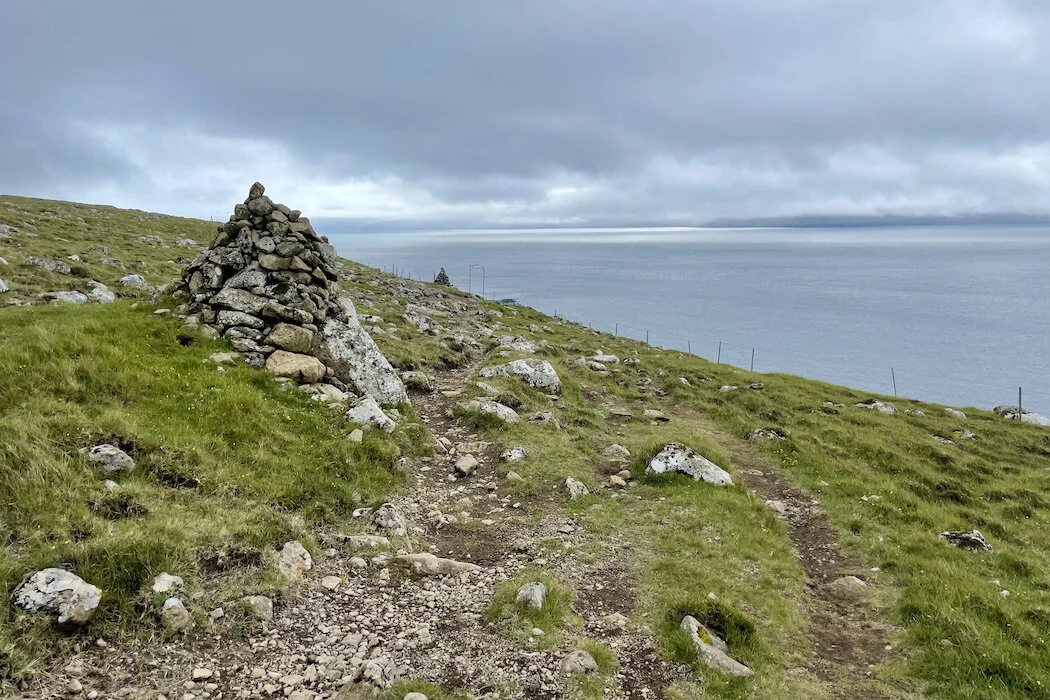Faraway Faroe Islands
View over Skálafjørdur
“Little by little, one travels far.” ― J.R.R. Tolkien
The Faroe Islands lie like 18 sparkling green gems in the North Atlantic halfway between Norway’s west coast and Iceland. Part of the Danish Kingdom since medieval times, the 1309 km (813 miles) from Copenhagen to Thorshavn make it far enough away, even today, that few journey here. Yet, sweeping ocean vistas and the experience of raw nature make a trip well worthwhile.
Irish monks were the first settlers here in AD 625, but they were displaced around 900 by Norwegian Vikings, who arrived with the Scottish and Irish women they picked up en route. During the Middle Ages, the islands remained part of Norway, in a religious sense under Nidaros (Trondheim), and for trade under Bergen, until the Danish crown succeeded in 1380. British occupation during WWII heightened long-held national, cultural, and linguistic aspirations, and paved the way for self-government in 1948.
Despite a temperate climate thanks to the Gulf Stream, the weather does dominate, blowing in about 260 days a year of rain, storms, and fog. The islanders have a history of hard times fighting the elements and hunger, which has contributed to the importance that religion continues to play in island life. With more than 95% of the population feeling close to Christianity, there is a church in every village. The Faroese are happy people whose respect and fascination for nature combine with a strong community spirit and a love of music and dancing although the music, including the recent heavy metal scene, can tend towards melancholia.
Villages and far-flung farms dot the Faroese landscape and potato farming once flourished on all the scant arable land. By the 1800s, salting and drying the fish catch took over, bringing vital international trade. Modern salmon farming is currently the islanders’ main source of income and the largest export. Yet, the Faroe Islands are home to more than 70,000 sheep, making wool, knitted products, and lamb meat solid income contributors.
While ferries still connect some islands, frequent outages due to inclement weather plagued service, so now numerous tunnels ease travel between the large central islands. Driving to Eysturoy and Bordoy islands from Thorshavn is a fascinating experience that goes through the longest tunnel which features a roundabout decorated with colored lights. Klaksvík on Bordoy is the second-largest city, the fishing capital, and the host of an annual rowing race in traditional wooden boats. The dramatic Christians Church, stone on the outside and white with a dark wooden ceiling inside, is located in Klaskvík just down the road from one of two Faroese breweries.
Each island has a natural and cultural appeal. There are hiking routes everywhere, all well-marked by Cairns in case of sudden bad weather. Other activity options include e-bike rentals, helicopter tours, kayaking, and bird-watching excursions. From the capital on Strømoy, an easy hike leads to Kirkjubøur, the islands’ earliest religious center, where the Romanesque Saint Olav’s Church from the 11th century is still in use next to the eerie, soaring ruins of the Magnus Cathedral. On the other side of Streymoy, the soaring Vestmanna cliffs provide breeding grounds for seabirds; remote Saksun, at the end of a one-lane road, has moss-roofed farms; Tjørnvík is a surfer’s paradise; and the oldest Faroese wooden church stands in Hvalvík.
Don’t Miss:
A boat excursion along the breathtaking Vestmanna cliffs to see the soaring and diving birds.
Lunch Tip:
Frida Kaffihus in Klaksvík for a different take on a burger among local residents.
Bedtime:
Hotel Brandan in Thorshavn, a new Scandinavian chic hotel with superb food.
Subscribe for inspiration to have my posts drop directly into your inbox. *If you enjoyed what you read, please share this post with like-minded travelers.*
*All photographs are mine, taken with my Nikon D3100 or iPhone 12 Pro.*

